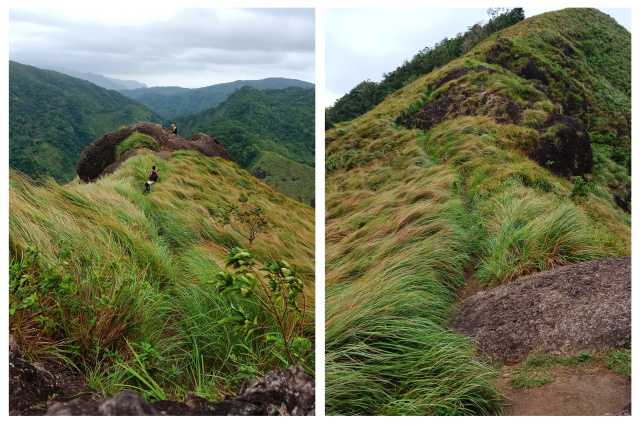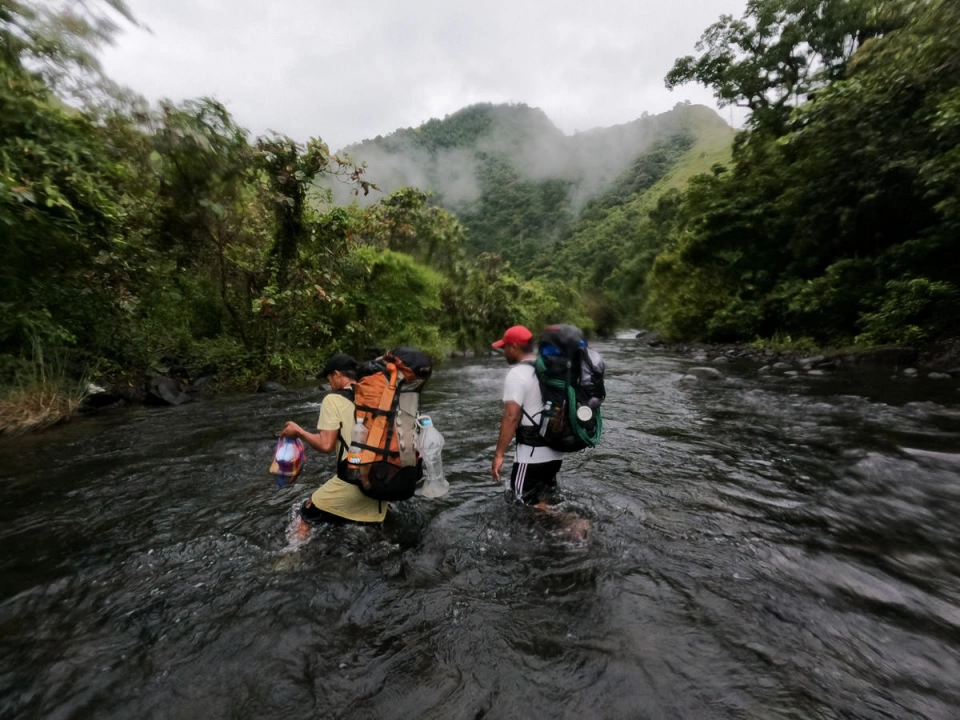According to legend, this mountain’s name originates from the Philippine swiftlet (Aerodramus mearnsi), an endemic bird species known for its unique dark plumage. EBird describes it as an “uncommon dark swiftlet” found throughout the Philippine islands, from Luzon to Mindanao and Palawan.
Mount Ibajay’s ridges and slopes, situated at 700–800 meters, provide an ideal habitat for the balinsasayaw (swiftlet), thanks to the mountain’s tropical dry and moist lowland forests.

In recent years, Mount Ibajay, the tallest peak in the municipality of Ibajay, has become a popular destination for visitors eager to immerse themselves in its natural beauty. The accessible trail makes it suitable for hikers of all ages. The exposed ridges are blanketed in tall grasses that sway in the breeze, bringing a dynamic sense of life to the rocky mountain landscape.
The trail’s jump-off point is located in Barangay Mambusao, accessible within 30–45 minutes from the town center. Hikers must register at the Barangay Hall and arrange for a local guide.
The hike itself takes about 45 minutes to an hour and can be done at any time of day, though early morning or late afternoon provides ideal lighting for the scenic views.

Kynth Edrel B. Rebaño
According to legend, this mountain’s name originates from the Philippine swiftlet (Aerodramus mearnsi), an endemic bird species known for its unique dark plumage. EBird describes it as an “uncommon dark swiftlet” found throughout the Philippine islands, from Luzon to Mindanao and Palawan.
Mount Ibajay’s ridges and slopes, situated at 700–800 meters, provide an ideal habitat for the balinsasayaw (swiftlet), thanks to the mountain’s tropical dry and moist lowland forests.

In recent years, Mount Ibajay, the tallest peak in the municipality of Ibajay, has become a popular destination for visitors eager to immerse themselves in its natural beauty. The accessible trail makes it suitable for hikers of all ages. The exposed ridges are blanketed in tall grasses that sway in the breeze, bringing a dynamic sense of life to the rocky mountain landscape.
The trail’s jump-off point is located in Barangay Mambusao, accessible within 30–45 minutes from the town center. Hikers must register at the Barangay Hall and arrange for a local guide.
The hike itself takes about 45 minutes to an hour and can be done at any time of day, though early morning or late afternoon provides ideal lighting for the scenic views.
You might like...

Caves and Falls around Panay Peninsula

Mount Baloy: The Toughest Hike in The Philippines

Embracing Ecotourism in Sibalom Natural Park

Poetry: Wild (Tumawog Falls)
Newsletter
Sign up to keep in touch with articles, updates, events or news from Kuno, your platform for nature
